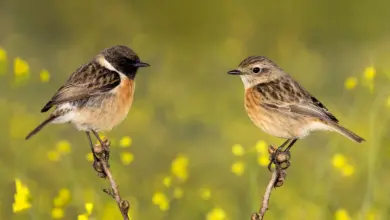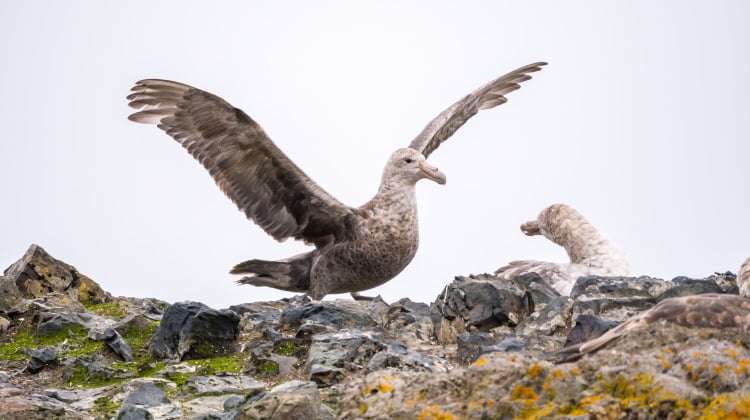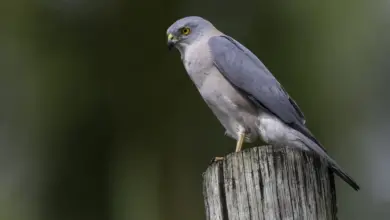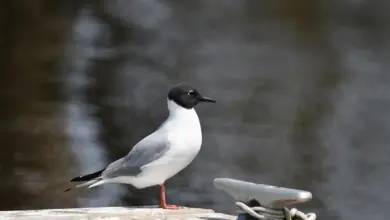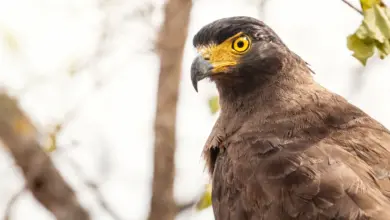The black cockatoos are a distinctive group of large, noisy parrots in various parts of Australia and New Guinea. There are four main species of black cockatoo that have adapted to utilize different food resources and habitats across the continent.
Their jet-black plumage sets them apart from other cockatoos, and their raucous calls are a familiar sound to many Australians. While adaptable generalists, black cockatoos face a number of threats, and some populations are declining. These iconic birds play important ecological roles in Australian ecosystems.

Taxonomy and Evolution
The black cockatoos belong to the avian order Psittaciformes and the family Cacatuidae. The cacatuidae consists of 21 species of cockatoo found mainly in Australia and New Guinea. This family diverged from other parrots around 45-65 million years ago.
Four recognized species of cockatoo have predominantly or entirely black plumage.
Red-tailed Black Cockatoo
The red-tailed black cockatoo (Calyptorhynchus banksii) is found across inland Australia. Two subspecies are recognized – the forest red-tailed black cockatoo and the Glossy black cockatoo. It is the smallest black cockatoo species.

Yellow-tailed Black Cockatoo
The yellow-tailed black cockatoo (Calyptorhynchus funereus) inhabits woodlands and forests across eastern and southeastern Australia. It is similar in size to the red-tailed black cockatoo. Two subspecies are recognized.
Carnaby’s Black Cockatoo
Carnaby’s black cockatoo (Calyptorhynchus latirostris) is a large cockatoo endemic to southwest Australia. Its population is listed as endangered due to habitat loss. It is the most recently described species, identified in 1948.
Glossy Black Cockatoo
The glossy black cockatoo (Calyptorhynchus lathami) inhabits forests and woodlands of eastern Australia and Kangaroo Island. It is listed as vulnerable and has a small total population. The smallest of the black cockatoos.
All species fill a niche as large seed predators. Their strong bills allow them to feed on hard-coated native seeds that many other birds cannot access.
Distribution and Habitat
The black cockatoos occupy a diversity of habitats across Australia. Their distribution is limited by the availability of suitable food trees and nesting sites.
Red-tailed Black Cockatoo
Found widely across drier inland regions of the continent. Occupies open eucalypt woodlands and forests that provide food and nesting trees. Requires large tree hollows.
Yellow-tailed Black Cockatoo
Associated with open eucalypt forests and woodlands along eastern and southern Australia. Nest in large tree hollows, limiting inland distribution. Two disjunct populations were recognized.
Carnaby’s Black Cockatoo
It is Largely restricted to remnant native woodlands in southwest Australia’s Wheatbelt. Requires food trees and hollows for breeding. Loss of these limited key habitat features threatens this species.
Glossy Black Cockatoo
Inhabits open forests and woodlands along eastern Australia. Require she-oak species for food and large hollow-bearing trees for nesting. The Kangaroo Island population is isolated with limited habitat.
Morphology and Identification
The black cockatoos are generally large parrots with entirely black plumage, though females may exhibit slight yellow markings on the head or tail. Their impressive size and coloration make them easy to distinguish from other Australian birds once learned. Key physical features of each species include:
Red-tailed Black Cockatoo
- Dark grey beak
- Back feathers edged with yellow
- Square yellow patches on tail feathers in females
- Dark red tail band in males
- 50-60 cm length
Yellow-tailed Black Cockatoo
- Large grey hooked bill
- Pale cheek patches
- Broad yellow tail band
- 55-65 cm length
Carnaby’s Black Cockatoo
- White cheek patches
- White tail bands on a black tail
- Red panel at the base of the tail
- 55-60 cm length
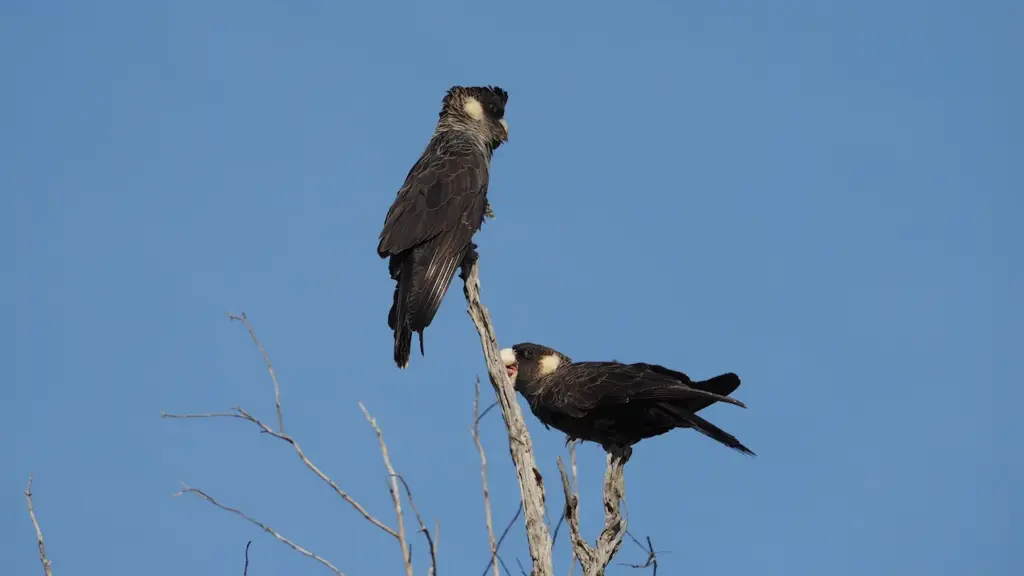
Glossy Black Cockatoo
- Red tail band
- Conspicuous red panels in the wing
- Narrower bill
- Smaller overall size, around 45 cm
Diet and Feeding
Black cockatoos feed primarily on seeds from native plants. Their large, powerful bills allow them to extract hard-coated seeds or deeply embedded in cones or fruit. Important food genera include:
Eucalypts
Several species feed on the seeds found inside eucalyptus nuts or gum nuts. The large bills are used to exert enough force to crack the tough, woody capsules open.
She-oaks
The cones and seeds of she-oak (Casuarina) trees provide an important food source for glossy and yellow-tailed black cockatoos.

Hakea
Seeds in the characteristic woody follicles of Hakea plants make up the bulk of diet of Carnaby’s cockatoos. Distribution is limited by these key food trees.
Insects, berries, and fruits are also occasionally eaten. Foraging for food often entails large daily movements between nesting and feeding areas, which may be quite distant. Can form large flocks where food is abundant.
Breeding and Lifecycle
The black cockatoos are monogamous, long-lived birds with low reproductive rates. They require tree hollows for nesting, which limits breeding sites.
Breeding Season
Peak breeding months are August through January but can vary by region. Courtship includes loud calling and males presenting food gifts to females.
Nest Sites
Nest in hollows of large eucalypt or she-oak trees. The cavity is deep with minimal nest material. Often reuse nest sites over successive years. Competition for limited hollows can be intense.
Eggs and Incubation
Lay 1-2 eggs incubated for around 30 days. Both parents share sitting on eggs, but the female does the majority. Incubation begins after the second egg is laid.
Fledging Period
Chicks are altricial, hatching naked and helpless. Fledging occurs at 9-11 weeks, and the family will remain together for an extended period as parents continue providing food.
Maturity and Lifespan
Sexual maturity reaches 3-5 years. Recorded lifespan in the wild up to 20-40 years. In captivity can live for 50-60 years.
Behavior and Ecology
The black cockatoos are highly social and noisy birds that exhibit complex behaviors and dynamics within populations. Their ecological roles help shape the Australian landscapes they inhabit.
Social Structure
Form flocks outside of the breeding season, which can number into the hundreds where food is abundant. Flocks often split up into smaller groups when foraging and maintain cohesion through loud contact calls. Males can be aggressive and establish social hierarchies.
Movement and Home Range
Daily movements between roosting and feeding areas. Some migration was observed between breeding and nonbreeding ranges. Home ranges vary from around 25 km2 for Carnaby up to over 1000 km2 for some red-tailed populations.
Damage to Trees
Black cockatoos cause significant damage to pine plantations by stripping bark and eating sapwood. Economic impacts can be substantial. Also, open fibrous fruits of eucalypts and banksias when feeding.
Seed Dispersal
Discarded seeds during feeding and waste assist the regeneration of food trees. Enable colonization of disturbed habitats. Important ecological role as seed dispersers.
Nest Site Creation
Powerful bills carve out hollows in tree limbs and trunks over many generations. The abundance of nesting sites facilitates many other hollow-dependent species. Significant ecosystem engineers.
Cultural Significance
The large, charismatic black cockatoos feature prominently in Aboriginal mythology and culture. Traditionally, they provided food and feathers for decoration. The Noongar people of southwest Australia considered the now-endangered Carnaby’s cockatoo a cultural icon. These unique birds also have a special place in the hearts of many Australians.
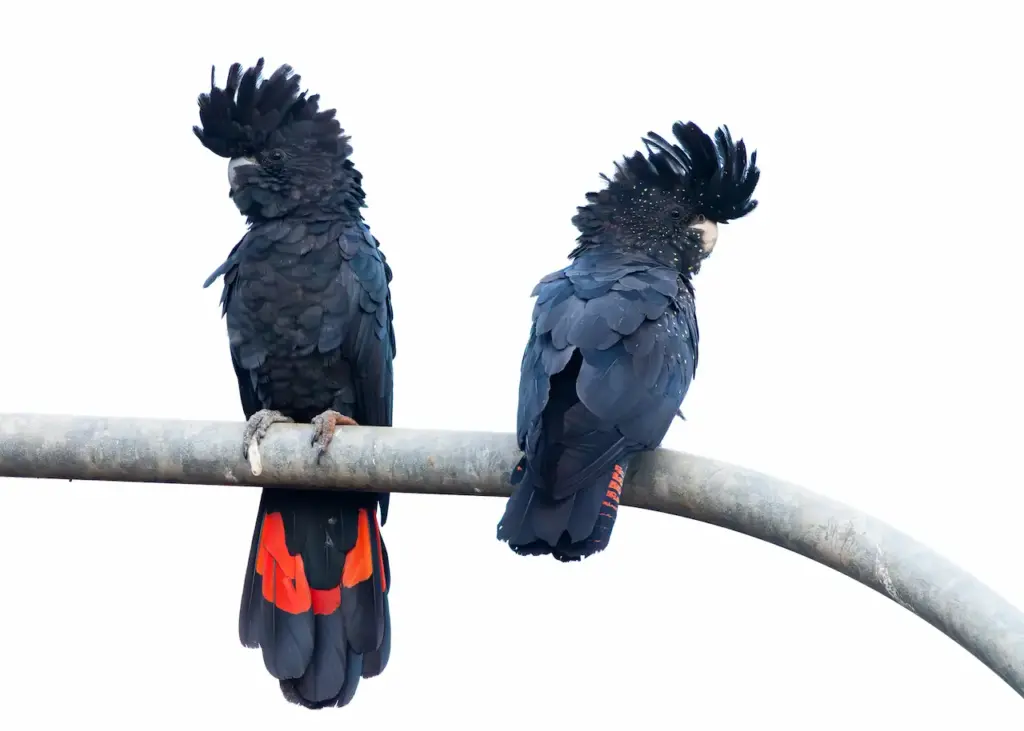
Conclusion
With their raucous cries and acrobatic flight, black cockatoos provide charisma to Australia’s woodlands. They fill important niches as seed dispersers and ecosystem engineers. Though adaptable, several populations are threatened by ongoing habitat destruction.
Preserving remnant woodlands and nest trees will be key to conserving these birds for future generations. The continued survival of black cockatoos throughout their former range is both an ecological and cultural imperative.

